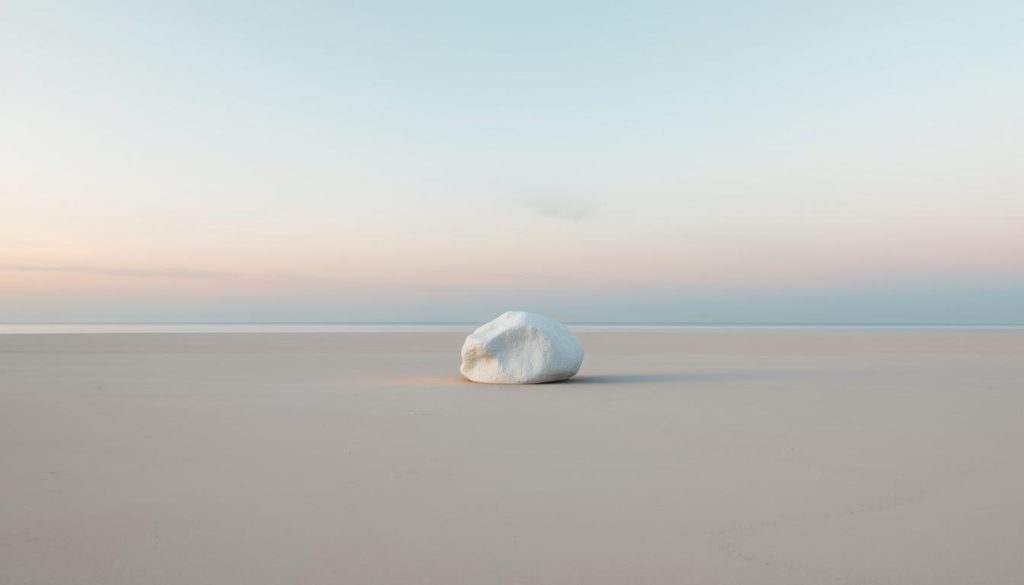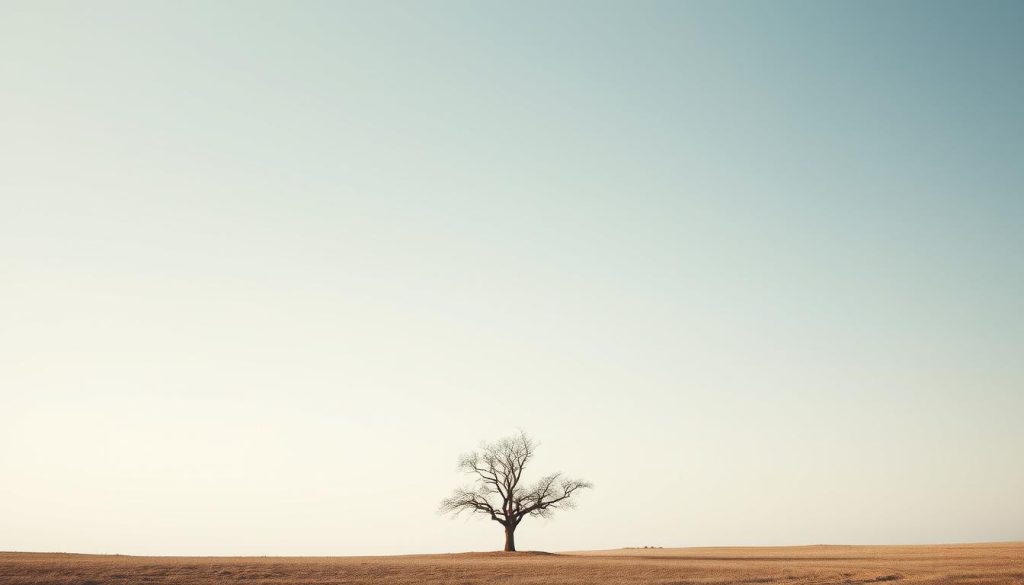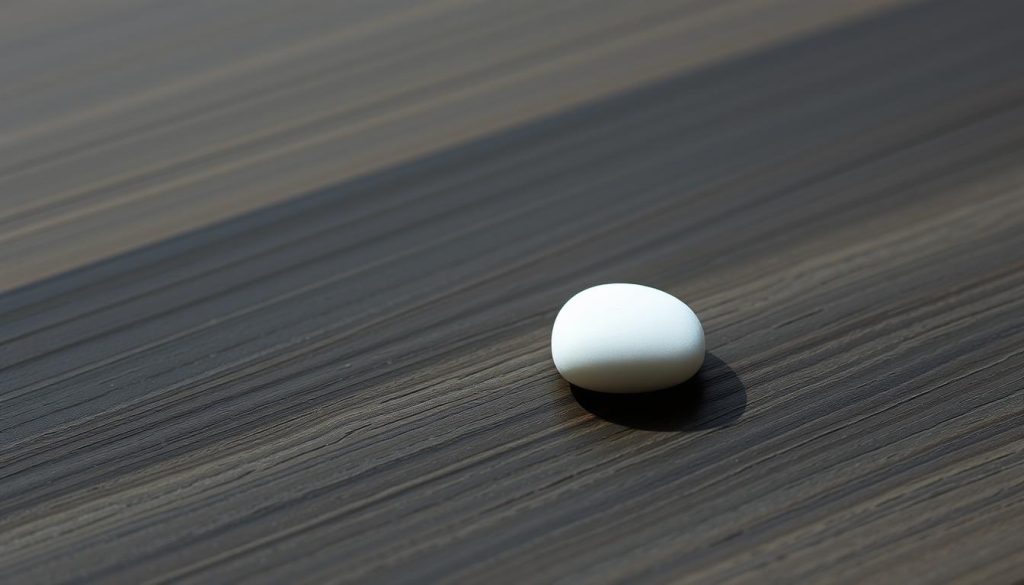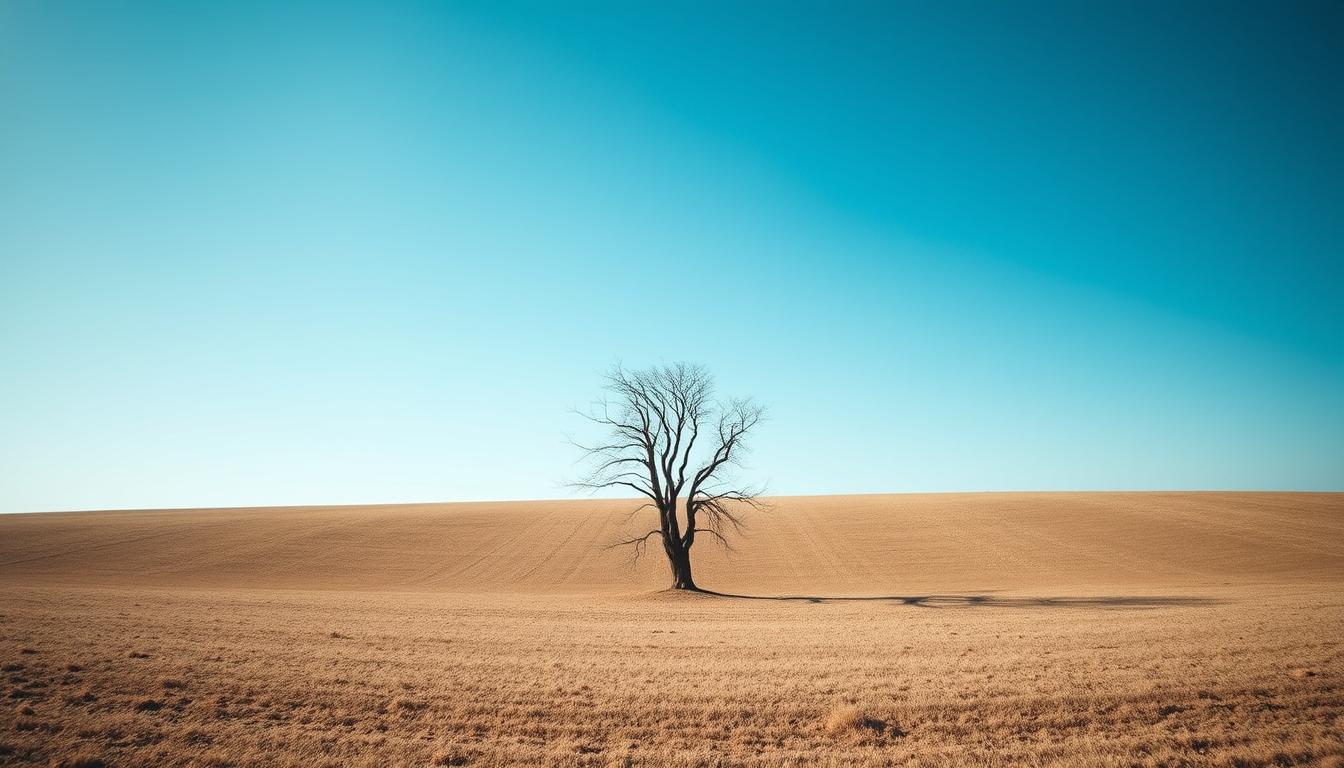I’m excited to explore minimalism in art and photography. We’ll see how simplicity can create deep visual expressions. As someone who loves art and photography, I find minimalism amazing. It stirs emotions, brings peace, and changes how we see art and stories.
Minimalism is all about focusing on what’s truly important. It’s about removing the unnecessary and showing the beauty of what’s left. This guide is for anyone who loves simplicity. It will help you understand the minimalist style and how to achieve it.
Let’s dive into the minimalist movement’s roots and rules. We’ll look at the magic of negative space and how to pick colors that work well together. We’ll also admire the work of famous minimalist artists and photographers. They show us how to find beauty in the everyday.
I hope this guide makes you want to try minimalism. It’s about finding beauty in simplicity and expressing yourself fully. Let’s start this journey together and see how minimalism can change our art and photography.
Embracing the Beauty of Less: What is Minimalism in Art?
At the heart of the minimalist art movement is a deep love for simplicity and purity. Artists in this movement love the beauty of less. They remove what’s not needed to show the true essence of their work.
They use clean shapes, empty space, and simple colors. This creates calm and clear visuals.
Origins and Principles of the Minimalist Movement
The minimalist art movement started in the 1960s. It was a reaction against the complex and rich art of the time. Artists like Donald Judd, Dan Flavin, and Carl Andre led the way.
They wanted to focus on the materials and forms, not just the artist’s feelings. This changed how art was seen.
The core principles of minimalism in art include:
- Simplicity of form: Minimalist works often feature simple geometric shapes, lines, and planes that create a sense of visual clarity.
- Emphasis on materials: The choice and use of materials are crucial, with artists highlighting the inherent properties and qualities of the medium.
- Rejection of illusion: Minimalist art aims to present the work as it is, without any attempt to create an illusionistic or representational space.
- Minimization of the artist’s hand: Minimalist artists often employ industrial fabrication techniques to remove the personal touch and emphasize the work’s objectivity.
Exploring the Essence: Simplicity, Clarity, and Purity
Minimalist artists celebrate simplicity, clarity, and purity in their work. They use basic shapes and think about empty space. They also use colors carefully.
This makes their art calm and inviting. It makes us think deeply and slowly.
Minimalist art shows that less is more. It teaches us to appreciate the simple things. By focusing on what’s essential, artists show us beauty in simplicity.
Minimalism in Art and Photography

Minimalism has changed the art and photography world a lot. It has made artists and photographers think about simplicity and less is more. This idea has become very important in making art and taking photos.
Minimalist art and photography focus on being simple. They use less and make the most of what they have. This makes their work stand out and touch people’s hearts.
Photographers use tricks like framing and light to make their photos simple yet powerful. They remove distractions to show the true beauty of their subjects. This lets viewers feel connected to the photo.
Artists also use minimalism in their work. They might use only one color or shapes to make a point. This way, they make art that is both beautiful and thought-provoking.
Minimalism is a strong way for artists and photographers to share their ideas. It lets them connect with people in a deep way. By choosing simplicity, they show us the beauty of less.
The Art of Negative Space: Composition Techniques

I love photography and the amazing effect of negative space. It’s the empty areas around the main subject. This can make images look stunning, adding balance and visual punch.
Using Negative Space to Create Visual Impact
Photographers use negative space to make images pop. By leaving parts of the frame empty, they focus the viewer’s attention. This makes the subject stand out more.
Photographers can use negative space in many ways. Here are a few:
- Removing things that aren’t needed to simplify the image
- Putting the subject in a frame of empty space
- Using it to create balance and symmetry
- Leading the viewer’s eye to the main point
Learning about negative space can make your photos better. It helps create images that grab your attention and stay with you.
Minimalist Color Palettes: Finding Harmony in Restraint
In the world of minimalist art and photography, color is key. It helps create a calm and simple look. Artists use few colors to make a big emotional impact.
Minimalist color schemes are simple yet elegant. They use just a few colors to make a peaceful mood. This lets viewers enjoy the art’s true meaning.
| Minimalist Color Palette Example | Characteristics |
|---|---|
|
Minimalist color theory is all about balance and simplicity. Artists pick colors carefully to make a calm harmony. This makes the art more impactful and thought-provoking.
The Power of Subtlety: Minimalist Subject Matter

In the world of minimalist art and photography, simplicity is key. Artists and photographers find beauty in the everyday. They create works that make us slow down and see the hidden beauty.
Capturing the Extraordinary in the Ordinary
Minimalist art makes us see the world differently. It finds beauty in everyday things and moments. By choosing simple subjects, artists turn the ordinary into something special.
Photographers use visual storytelling to share deep emotions with simple objects. The beauty of these minimalist subject matter choices lets us see the essence of things.
Things like a coffee cup’s curve or an empty room’s stillness can be powerful. These minimalist subject matter choices inspire and captivate us. They show us to appreciate the beauty of simplicity every day.
Minimalist Photography: Capturing the Essence
Minimalism in art has changed photography a lot. It makes photographers focus on the simple and important parts of their work. They aim to show the true essence of a subject by removing what’s not needed.
Techniques for Creating Powerful Minimalist Images
Minimalist photographers use special techniques to make their images stand out. They often use negative space to guide the viewer’s eye. This helps create a balanced and harmonious image.
Lighting is also key in minimalist photography. They use natural light to add depth and highlight the subject. This makes the image simple yet clear, fitting the minimalist style.
The choice of subject is important too. They often pick everyday things or shapes. This way, they make the ordinary look amazing and meaningful.
With these techniques, minimalist photographers make images that grab your attention. They encourage you to take your time and really see the subject’s essence.
Embracing the Minimalist Mindset: Simplifying Your Creative Process
Being an artist or photographer can change when you adopt a minimalist mindset. It opens up new ways to be creative and express yourself. You focus on what’s truly important.
The minimalist mindset values simplicity, clarity, and purity. It helps you remove what’s not needed, both in your space and your mind. This makes your creative process clearer and more focused.
One big plus of minimalism is how it simplifies your work. You don’t get caught up in trying to be perfect or collecting too much stuff. Instead, you focus on your art’s core. This might mean using less space or colors to create harmony.
Minimalism also lets you express yourself more freely. You don’t have to follow what others think or do. This way, you can show your true artistic self and feel more fulfilled.
In the end, minimalism is about valuing what’s important and enjoying the simplicity of art. It helps you be more creative, focused, and true to yourself. This changes how you create and what you make.
| Principle | Description |
|---|---|
| Simplicity | Embracing a pared-down approach that focuses on the essential elements. |
| Clarity | Enhancing visual and conceptual clarity through the strategic use of negative space and minimalist compositions. |
| Purity | Cultivating a sense of authenticity and personal expression by letting go of external influences and trends. |
Celebrating Restraint: Famous Minimalist Artists and Photographers
The minimalist movement has given us some of the most famous artists and photographers. Mark Rothko’s paintings and Hiroshi Sugimoto’s photos are just a few examples. They show us the beauty of simplicity in art.
Mark Rothko was a key figure in the minimalist movement. His paintings use colors to create deep feelings. Each brushstroke and color choice is meant to make us think and feel.
Hiroshi Sugimoto is known for his photos that show the passage of time. His pictures of the sea and buildings are simple yet powerful. They make us see the world in a new way.

